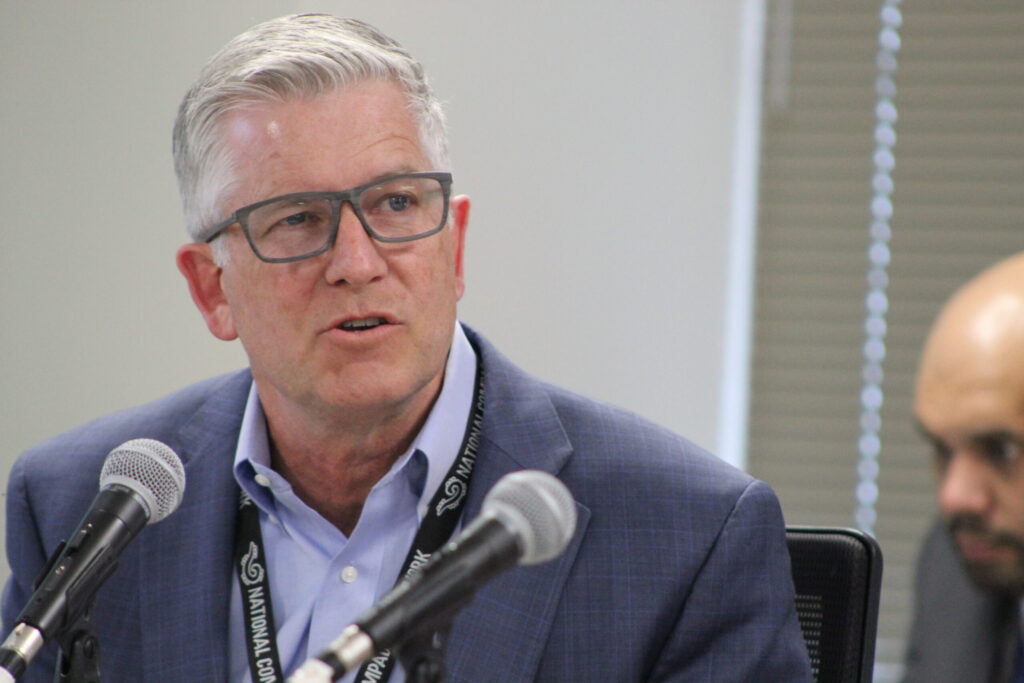Don’t discount wildfire’s horrifying, destructive toll on ranching communities | GABEL


Spark and wind carouse around like the town drunks, a green Mickey’s wide-mouth within reach. Spark, undoubtedly, has a burning cigarette in his yellowed, stubby hand. Wind, though, is always present around town but he’s unpredictable. When he’s at his worst, he is abusive.
When the two get liquored up, especially in dry years, they raise hell in rural areas. Though these are the areas the television news refers to as sparsely populated, largely empty or extremely rural.
In Wyoming, the Happy Jack Fire west of Cheyenne has burned 6,618 acres. In Colorado, the Boggsville Fire has burned 1,084 acres southeast of Las Animas in Bent County. In Nebraska, the largest fire, Betty’s Way in the central part of the state burned nearly 70,000 acres. In Texas, the Grape Vine Creek Fire burned 34,882 acres; the Smokehouse Creek Fire, the largest in state history, is partially contained with about 1.1 million acres burned; and the Windy Deuce Fire burned about 145,000 acres.
Stay up to speed: Sign up for daily opinion in your inbox Monday-Friday
In Texas alone, the beef business is worth about $15.5 billion and 85% of the state’s cowherd is located in the panhandle where the fires ripped through the already drought-stricken area. In Nebraska, beef is a $10.6 billion business. In Bent County, Colorado, about 735,000 acres are part of agriculture production, primarily livestock grazing as well as hay, corn, wheat, sorghum and sunflowers. In all, the county produces about $60 million in ag products. For a county with only one incorporated town, Las Animas, and in the 15 least-populated counties in the state, that’s an impressive economic lift.
Though the areas that stand scorched may not be destinations on your Spring Break travel plans, they are economically and historically important. The nation’s cowherd is already at historic-low levels, and with estimates of more than 10,000 head dead, the cattle lost in these fires or destroyed because of injuries is significant.
One of the bright spots to come out of these fires are the helpers. Loads of baby calves have been orphaned and there are veritable armies of kids and families stepping up and volunteering to care for these calves until their owners are prepared to take them back. Caring for bottle calves isn’t easy – they must be fed multiple times daily, it’s nearly impossible to mix and feed a bottle without wearing either powder or liquid in some combination, and the little boogers are quite skilled in tap dancing across toes. Bags of milk replacer have been donated by ranchers and businesses and hauled to the areas hardest hit.
One of my friends, a member of Logan County Cattlewomen, is taking a Spring Break road trip with her two teen daughters to Texas, loaded for bear with shovels, milk replacer, feed, medications, bottles, tubers, colostrum replacement, buckets, halters, leather gloves, coolers of vaccines, syringes, needles and the ointments necessary for treating burns on cattle.
Other friends have designed t-shirts being sold with proceeds going directly to their Nebraska neighbors to help pay for the destroyed fences. A five-strand barbed-wire fence costs about $10,000 per mile to replace, plus the hard labor and associated cuts and blisters that come free.
Trucks loaded with hay have been headed to Texas and Nebraska. Near Canadian, Texas, helicopters have dropped feed and supplies. It is all grace extended by people who may well be affected next time.
Ranchers are spending time moving carcasses, taking photos for insurance, and tallying their losses. Orphaned calves and cows that lost their calves are wandering around burned ground bawling. Ranchers are having to assess live cattle to determine if burns to their eyes and udders are too devastating to recover from. Destroying cattle is a sickening job for the people who devote their lives to caring for them.
The effects these fires will have upon the cattle industry will reverberate for months and years. Each calf lost will translate, next fall, to one fewer feeder calf which will translate, 160 days later, to one fewer fat steer which will translate, a few weeks later, to about 500 pounds of salable beef and multiple byproducts. That calf, if it was a replacement heifer, will not raise the 10 or so calves during her lifetime. Though the fires be extinguished, the burns inflicted on the industry and the families who make it go round will most certainly leave scars.
Rachel Gabel writes about agriculture and rural issues. She is assistant editor of The Fence Post Magazine, the region’s preeminent agriculture publication. Gabel is a daughter of the state’s oil and gas industry and a member of one of the state’s 12,000 cattle-raising families, and she has authored children’s books used in hundreds of classrooms to teach students about agriculture.












